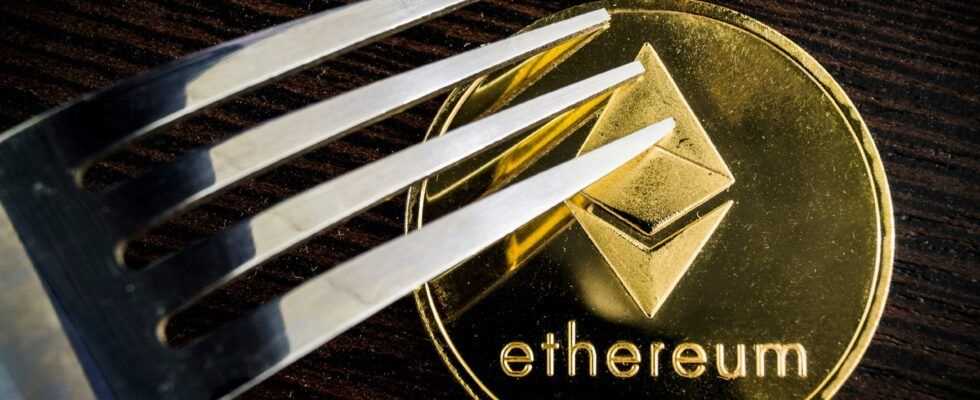Due to the hard fork “London”, the fee policy at Ethereum will be adjusted and the amount of ETH in circulation will be throttled. In the meantime, ether trading will be suspended on some crypto exchanges.
The time has come for Block number 12,965,000 the hard fork “London” takes place on Ethereum today. The upgrade includes four “improvement proposals”, so-called Ethereum Improvement Proposals (EIP), which are implemented at the same time. Great expectations are attached to EIP-1559, which not only changes the fee policy, but also introduces a deflation mechanism.
Ethereum introduces basic fee
If you send transactions via Ethereum, you sometimes have to dig deep into your wallet. The fees, in ether parlance: “gas fees”, can sometimes take on absurd proportions at peak times and let the blockchain degenerate into a playground for high earners. This is due to an outdated fee model that is apparently overwhelmed by the hype surrounding DeFi and NFT. Because until now, an auction principle has applied: those who pay the most fees are preferred by miners for fast processing. If you don’t play the betting game, you need meat.
That is changing now. With the EIP-1559, Ethereum introduces an algorithmically determined basic fee that adapts to the network load. Optionally, transactions can also be provided with “tips” in order to increase the incentive for quick processing. Despite the preferential rights for tip donors, the hard fork should benefit all Ethereum users. The crypto exchange Gemini estimates that EIP-1559 reduces transaction costs by an average of 90 percent.
Larger blocks reduce costs
So that there can be uniform charges, uniform network utilization or block utilization must also be guaranteed. After all, blocks in which transactions are processed have limited capacities. If the load increases with many transactions coming in at the same time, not only does the mempool grow, ie the “waiting room” for outstanding transfers. The gas fees also keep increasing by leaps and bounds.
The hard fork is intended to solve this problem by adapting the block size to demand in the future. For this purpose, the upper limit of the block size will be doubled from 12.5 million gas units to 25 million. However, the aim is to achieve a 50 percent utilization rate, i.e. roughly the maximum of the previous block size. If the demand exceeds this rate and the blocks are more than 50 percent full, the basic fee increases. In the opposite direction, the fees decrease with lower occupancy. The increase in the block size is intended to keep the fees stable even in “hot phases”.
Ether throttling
Another side effect of the EIP-1559 is the throttling of the supply volume. Because the basic fees will not go to miners in the future, but will be “burned” and thus taken out of circulation. This mechanism reduces the amount of circulating ether and could therefore prove to be a price driver. Since miners still receive tips as compensation, they will not go away empty-handed in future. However, the EIP-1559 initiates the slow farewell to the miners, who no longer play a role in the new Ethereum 2.0 network architecture after the consensus procedure has been changed from Proof of Work to Proof of Stake.
However, there could be delays on some exchanges during the hard fork. Binance has already announced that it will pause deposits and withdrawals with Ether and ERC-20 tokens from 11:45 a.m. (UTC). as well OKEx, which already ceases trading at 9:00 a.m. (UTC).
